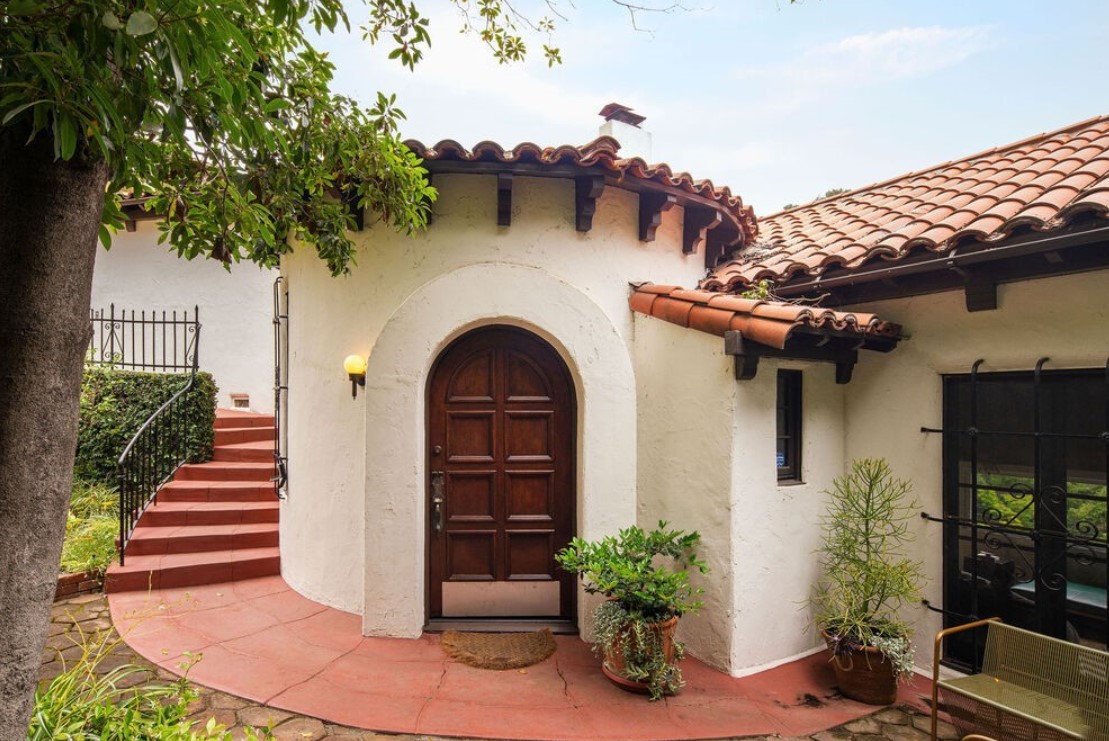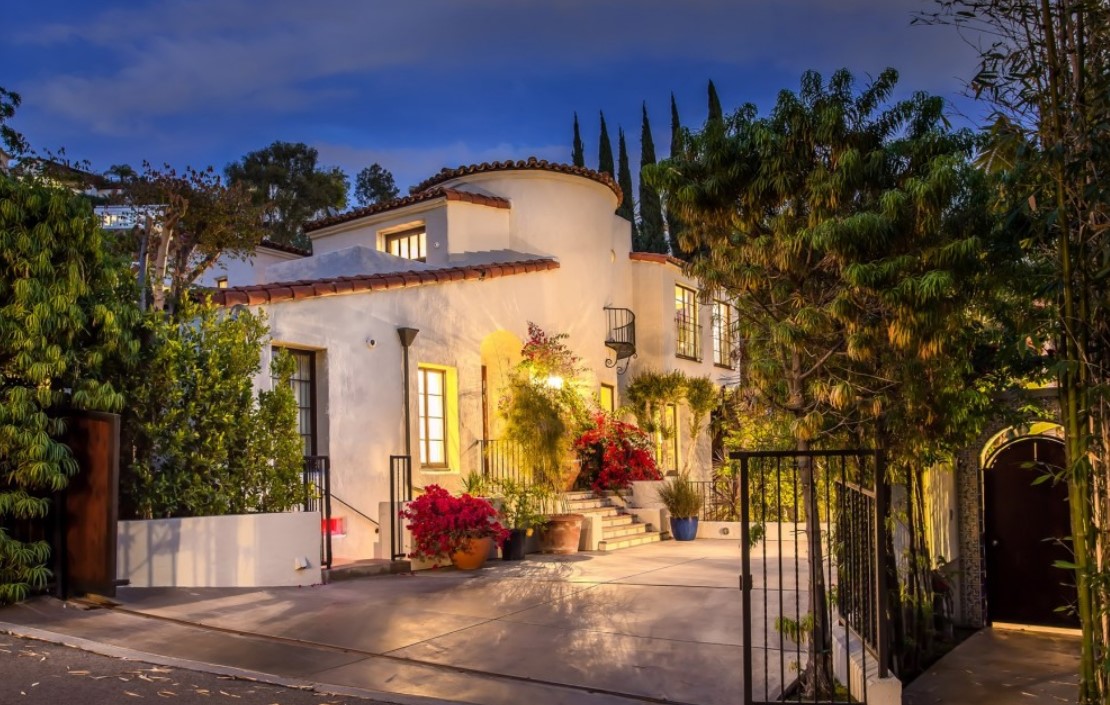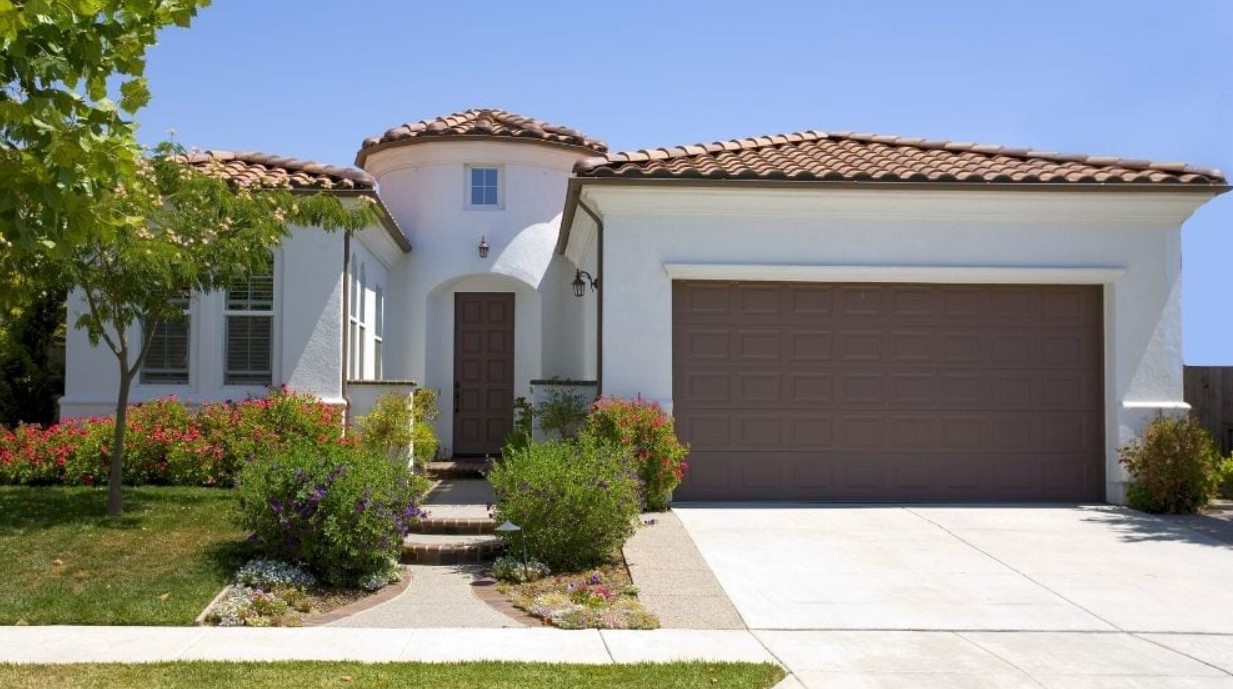Spanish style homes, also known as Spanish Colonial Revival architecture, evoke a timeless charm and distinct character that have captivated homeowners for decades. Rooted in the architectural traditions of Spain and Latin America, these homes blend historical influences with modern amenities to create a unique living experience.
Definition of Spanish Style Homes

Spanish style homes, also known as Spanish Revival or Spanish Colonial homes, are a popular architectural style that originated in the early 20th century. These homes are characterized by their unique blend of traditional Spanish architecture and modern comforts. They often feature stucco walls, red-tiled roofs, arched doorways, and wrought-iron details, creating a warm and inviting atmosphere.
Spanish style homes continue to captivate homeowners and architects alike. Their timeless beauty, combined with functional and aesthetic features, makes them a sought-after architectural style. Whether it’s the stucco exteriors, arched doorways, or intricate tile work, each element contributes to the home’s unique charm and elegance.
In summary, Spanish style homes offer a blend of history, culture, and sophistication that is unmatched. Their distinctive characteristics and thoughtful design elements create a living environment that is both beautiful and comfortable.
Importance and Popularity of Spanish Style Homes

Spanish style homes are a timeless architectural marvel that blend rich history with distinctive design elements. These homes, characterized by their red tile roofs, stucco exteriors, and ornate ironwork, have gained immense popularity for their aesthetic appeal and cultural significance. But what makes them so special? Let’s dive into the enchanting world of Spanish style homes to uncover their importance and widespread popularity.
Historical Background
- Origin of Spanish Style Architecture: The roots of Spanish style architecture trace back to the Moorish influence in Spain during the 8th to 15th centuries. This era saw the emergence of architectural elements such as arches, courtyards, and intricate tile work, which would later define Spanish homes. The Spanish Colonial period further spread these architectural gems to the Americas, where they adapted to new climates and materials.
- Evolution Over the Centuries: Spanish style homes evolved significantly over the centuries, blending indigenous building techniques with Spanish aesthetics. The arrival of Spanish missionaries in the New World led to the construction of missions, which served as prototypes for many Spanish style homes. These structures emphasized simplicity, functionality, and harmony with nature.
- Influence on Modern Architecture: Today, Spanish style architecture continues to influence modern designs. Elements like open courtyards, terracotta tiles, and wrought iron fixtures are seamlessly integrated into contemporary homes, creating a fusion of tradition and modernity.\
Types of Spanish Style Homes

Spanish-style homes are a popular architectural choice known for their unique charm and historical significance. These homes, inspired by the rich cultural heritage of Spain, are characterized by their distinctive features and timeless elegance. In this article, we will explore the various types of Spanish-style homes, delving into their unique characteristics and what makes each style stand out.
1. Spanish Colonial Homes
Spanish Colonial homes, also known as Spanish Colonial Revival, trace their origins back to the early Spanish settlements in the Americas. These homes are a direct reflection of the architecture seen in Spain during the colonial period.
Key Features
- Stucco Walls: The exterior of Spanish Colonial homes is often made from stucco, which provides a smooth and durable finish.
- Red Tile Roofs: The iconic red clay tile roofs are not only aesthetically pleasing but also practical, providing excellent insulation.
- Courtyards: Central courtyards are a hallmark of this style, often featuring lush gardens, fountains, and seating areas.
- Arched Doorways and Windows: Rounded archways and windows add a sense of grandeur and historical authenticity.
- Wooden Beams: Exposed wooden beams on ceilings and porches add a rustic yet elegant touch.
2. Mission Revival Homes
Mission Revival homes emerged in the late 19th and early 20th centuries, drawing inspiration from the early Spanish missions established in California.
Distinctive Characteristics
- Simplistic Design: These homes feature a more simplistic and austere design compared to other Spanish styles.
- Bell Towers: Inspired by mission churches, bell towers are a common element in Mission Revival homes.
- Arcades: Covered walkways or arcades are often seen, providing shaded areas for relaxation.
- Clay Roof Tiles: Similar to Spanish Colonial, Mission Revival homes feature red clay roof tiles.
- Smooth Plaster Walls: Smooth plaster walls are a defining characteristic, often painted in earthy tones.
3. Mediterranean Revival Homes
Mediterranean Revival homes combine elements from various Mediterranean cultures, including Spanish, Italian, and Greek influences. This style became popular in the United States during the early 20th century, especially in coastal areas.
Key Elements
- Asymmetrical Facades: These homes often have asymmetrical facades, adding to their eclectic charm.
- Wrought Iron Details: Wrought iron gates, railings, and window grilles add a touch of elegance and security.
- Terracotta Roof Tiles: While red clay tiles are common, terracotta tiles in various shades are also used.
- Balconies and Loggias: Balconies and covered loggias provide outdoor living spaces with stunning views.
- Ornate Tiles: Colorful and ornate tiles are used for stair risers, floors, and decorative accents.
4. Pueblo Revival Homes
Pueblo Revival homes are inspired by the traditional adobe structures of the Pueblo Native Americans. This style gained popularity in the Southwestern United States in the early 20th century.
Characteristics
- Adobe Construction: Homes are typically constructed from adobe or stucco, providing thick, insulating walls.
- Flat Roofs: Flat or gently sloping roofs with parapets are a distinctive feature.
- Rounded Edges: Rounded corners and soft, organic shapes mimic the traditional Pueblo architecture.
- Vigas and Latillas: Exposed wooden roof beams (vigas) and smaller wooden poles (latillas) are commonly used.
- Earthy Colors: Exterior colors are often earthy and muted, blending seamlessly with the natural landscape.
5. Andalusian Style Homes
Andalusian style homes are inspired by the southern region of Spain, known for its romantic and Moorish influences. These homes are characterized by their ornate details and vibrant colors.
Signature Features
- Courtyards with Fountains: Central courtyards with intricate tile work and fountains are a focal point.
- Moorish Arches: Horseshoe and ogee arches add a Moorish flair to doorways and windows.
- Colorful Tiles: Brightly colored tiles in geometric patterns are used extensively.
- Ironwork: Decorative ironwork, including balconies and window grilles, adds a touch of elegance.
- Lush Gardens: Gardens with exotic plants and flowers enhance the romantic ambiance.
6. Hacienda Style Homes
Hacienda style homes are inspired by the large estate homes found in the rural regions of Spain and Latin America. These homes are designed to be both functional and aesthetically pleasing.
Key Features
- Large Courtyards: Central courtyards serve as the heart of the home, often featuring gardens and water features.
- Clay Tile Roofs: Traditional red clay tile roofs provide both beauty and practicality.
- Arcades and Verandas: Covered outdoor walkways and verandas provide shade and outdoor living space.
- Thick Walls: Thick adobe or stucco walls offer excellent insulation and a rustic appearance.
- Ornate Doors and Windows: Carved wooden doors and decorative window grilles add to the charm.
7. Contemporary Spanish Homes
Contemporary Spanish homes blend traditional Spanish architectural elements with modern design principles, creating a unique and stylish living environment.
Notable Features
- Open Floor Plans: Modern layouts with open floor plans enhance the flow of the home.
- Minimalist Aesthetics: Clean lines and minimalist design elements are often incorporated.
- Sustainable Materials: Use of sustainable and eco-friendly materials is a common trend.
- Indoor-Outdoor Living: Seamless transitions between indoor and outdoor spaces are emphasized.
- Smart Home Technology: Integration of smart home technology for convenience and efficiency.
Spanish-style homes offer a diverse range of architectural designs, each with its unique charm and historical significance. From the rustic elegance of Spanish Colonial homes to the modern sophistication of Contemporary Spanish homes, these styles continue to captivate homeowners and architects alike. Understanding the distinctive features of each type can help you choose the perfect Spanish-style home that suits your aesthetic preferences and lifestyle.
Modern Adaptations of Spanish Style Homes

Spanish-style homes have long been admired for their rich history, distinctive features, and timeless elegance. In recent years, there has been a resurgence in the popularity of these homes, with modern adaptations bringing a fresh and contemporary twist to traditional Spanish architecture. In this article, we will explore how Spanish-style homes have evolved to meet the needs and tastes of today’s homeowners while retaining their unique charm.
1. Fusion of Traditional and Contemporary Elements
Modern adaptations of Spanish-style homes often involve a harmonious blend of traditional elements with contemporary design principles. This fusion creates a unique aesthetic that honors the past while embracing the present.
Key Features
- Open Floor Plans: Modern Spanish homes often feature open floor plans that enhance the flow of natural light and create spacious living areas. This contrasts with the compartmentalized rooms typical of traditional Spanish homes.
- Minimalist Aesthetics: While traditional Spanish homes are known for their ornate details, modern adaptations tend to favor a more minimalist approach, with clean lines and subtle decorative elements.
- Sustainable Materials: The use of sustainable and eco-friendly materials is a common trend in modern Spanish homes, reflecting a growing emphasis on environmental consciousness.
2. Indoor-Outdoor Living Spaces
One of the most appealing aspects of modern Spanish-style homes is the seamless transition between indoor and outdoor living spaces. This design philosophy takes full advantage of the pleasant climates where these homes are often found.
Distinctive Features
- Courtyards and Patios: Central courtyards and expansive patios are integral to the design, providing outdoor areas for relaxation and entertainment.
- Glass Walls and Sliding Doors: Large glass walls and sliding doors create a sense of openness and allow for unobstructed views of the outdoors.
- Outdoor Kitchens and Fireplaces: Outdoor kitchens, fireplaces, and seating areas enhance the functionality and enjoyment of outdoor living spaces.
3. Technological Integration
Modern Spanish-style homes often incorporate the latest in smart home technology, offering convenience, efficiency, and enhanced security.
Notable Integrations
- Automated Lighting and Climate Control: Smart systems allow homeowners to control lighting and climate settings remotely, ensuring comfort and energy efficiency.
- Security Systems: Advanced security systems, including surveillance cameras and smart locks, provide peace of mind.
- Home Automation: Integration of home automation systems enables the control of various household functions, from entertainment systems to kitchen appliances, through a single interface.
4. Contemporary Interior Design
While the exterior of modern Spanish-style homes retains traditional features such as stucco walls and red tile roofs, the interior design often reflects contemporary tastes.
Interior Elements
- Neutral Color Palettes: Modern interiors favor neutral color palettes, with shades of white, beige, and gray dominating the design.
- Sleek Furniture: Furniture with clean lines and modern designs is commonly used to create a stylish and comfortable living environment.
- Artisanal Touches: Handmade and artisanal elements, such as custom tiles and handcrafted furniture, add a touch of authenticity and craftsmanship.
5. Energy Efficiency
Energy efficiency is a significant consideration in the design of modern Spanish-style homes, aligning with the broader trend towards sustainable living.
Energy-Saving Features
- Solar Panels: Many modern Spanish homes are equipped with solar panels, reducing reliance on traditional energy sources and lowering utility costs.
- Energy-Efficient Windows: Double or triple-glazed windows enhance insulation, keeping homes cool in the summer and warm in the winter.
- Insulated Roofing: Modern roofing materials and insulation techniques improve energy efficiency and contribute to a comfortable living environment.
6. Customization and Personalization
Modern adaptations of Spanish-style homes often emphasize customization, allowing homeowners to tailor their living spaces to their specific needs and preferences.
Personalization Options
- Custom Floor Plans: Flexible floor plans enable homeowners to create spaces that suit their lifestyle, whether it’s a home office, gym, or additional bedrooms.
- Unique Architectural Details: Homeowners can incorporate unique architectural details, such as custom arches, columns, and tile work, to reflect their personal style.
- Landscaping and Gardens: Personalized landscaping and garden designs enhance the beauty and functionality of outdoor spaces, incorporating elements such as water features, native plants, and outdoor art.
Modern adaptations of Spanish-style homes successfully blend traditional architectural elements with contemporary design principles, creating living spaces that are both stylish and functional. From open floor plans and indoor-outdoor living areas to the integration of smart home technology and energy-efficient features, these homes offer a perfect balance of old-world charm and modern convenience. Whether you are drawn to the historical significance or the timeless beauty of Spanish-style homes, their modern adaptations provide a versatile and appealing option for today’s homeowners.
